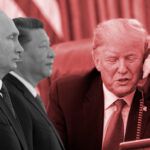The other Berlin Wall: How the Soviet bioweapons program was revealed
By David E. Hoffman | November 9, 2009
When the Berlin Wall came down November 9, 1989, the decades-long division of Europe was over. But there was another event, just two weeks before, that also broke down barriers and changed the course of the Cold War. In the last week of October, the director of the Soviet All-Union Institute of Ultra-Pure Biological Preparations, Vladimir Pasechnik, was on a business trip to France. He used a phone booth in Paris to call the British Embassy and offered to defect. The British Secret Intelligence Service responded with alacrity, and Pasechnik was soon on his way to London. Over the course of several months, Pasechnik was debriefed at a safe house on the coast of England. The British were astounded at what he told them.
Western intelligence agencies had long puzzled over whether the Soviets possessed a biological weapons program, but they lacked solid proof. Moreover, for many years, there had been debate among policy and intelligence analysts in the West about whether biological weapons made sense in the nuclear age. The thinking was that nuclear weapons were such an effective deterrent that germ warfare wasn’t worth the investment. President Richard Nixon reflected this outlook when he decided in 1969 to abandon the U.S. offensive germ warfare program. “We’ll never use the damn germs, so what good is biological warfare as a deterrent?” Nixon told his speechwriter William Safire. “If somebody uses germs on us, we’ll nuke ’em.” The assumption was that the Soviet Union had reached a similar conclusion.
But Pasechnik disclosed over weeks of debriefings what some analysts had suspected for years: The Soviet Union was working on pathogens as strategic weapons and had built a hidden archipelago of laboratories and industrial plants to create these agents despite signing on to the 1972 Biological and Toxin Weapons Convention. Specifically, Pasechnik revealed that the Soviet Union had weaponized classic pathogens and was seeking to create new antibiotic-resistant agents that would break down the defenses of the victims. The Soviets also were working on vaccines that would shield their germ warfare operators from harm and developing detectors to warn of a possible attack. Pasechnik noted that the Soviets hadn’t yet achieved one of their primary goals–the creation of a new biological warfare agent completely resistant to treatment–but the effort was underway.
In addition, Pasechnik described the sprawling network of laboratories and production facilities hidden in a purportedly civilian enterprise known as Biopreparat that employed tens of thousands of scientists and support workers. He revealed that the Soviets had created a system of false financial plans for the institutes, purporting to show they were working on innocent civilian biotechnology projects in order to cover up the military work.
Until they debriefed Pasechnik, the British had postulated that if the Soviets were doing anything, it was trying to create a sort of hybrid chemical-biological weapon that would emit toxins and would perhaps be used for close battlefield combat against troops.
But after speaking with Pasechnik, the British realized that the Soviet program was far more ambitious than the West had ever imagined. This was evident from the moment he began talking about the pathogens he knew the most about–for example, Yersinia pestis, the agent that causes plague. Pasechnik said that great emphasis had been placed on the perfection of pneumonic plague as a weapons agent by optimizing its production, storage, aerosol dissemination, and resistance to antibiotics. At his institute in Leningrad, Pasechnik’s job was to find ways to prepare and manufacture the pathogens so they could be weaponized without losing effectiveness and virulence.
One of the most chilling disclosures Pasechnik made was that the Soviet military had already weaponized plague and was pouring it into some kind of warhead that had to be refilled every few months. In order to produce enough agent, the industrial capacity had been scaled up, reaching 2 metric tons per year. He revealed that the Soviets had tested the plague agent on baboons on Vozrozhdeniye Island in the Aral Sea as recently as 1989. As the secrets spilled out, the mention of plague carried special weight: It was evidence that the Soviets were considering bioweapons as a strategic means of killing entire populations.
Once Pasechnik broke down the mystery surrounding Biopreparat, his disclosures raised a host of new questions for the West. Did Soviet President Mikhail Gorbachev and Foreign Minister Eduard Shevardnadze, the champions of “new thinking” and glasnost, know about the dangerous agents? And if they did, what had they done about it?
Debriefers directed these and many related questions to Pasechnik. The litany of queries about Gorbachev perplexed him. Gorbachev must have known if Shevardnadze knew, he said. That was how the system worked. And Pasechnik was certain that Shevardnadze had attended some of the high-level meetings on the program. (In fact, my own research showed that Shevardnadze had attended one such meeting just a few months before Pasechnik defected.)
If Gorbachev knew about the secret program, then the West might have had to revise its thinking about the Soviet leader. Prime Minister Margaret Thatcher had declared Gorbachev as a man with whom she could do business. Likewise, in Washington, after a policy “pause” in 1989, President George H. W. Bush was planning his first summit with Gorbachev. So could they do business with him, or was he the leader of a country and a system that created–and was still creating–the most destructive biological weapons humankind had ever known, and in violation of all treaty promises?
Pasechnik’s information also posed a difficult choice about how to approach Moscow. Would it be better to confront the Soviet Union openly and make public the accusations of treaty violations, or would it be more effective to work the back channels?
The decision was made to pursue quiet diplomacy and not challenge Gorbachev in public. One reason was that, after the fall of the Berlin Wall, there were urgent new problems demanding attention: the future of German unification and the architecture of Europe, strategic arms reductions, and the fate of glasnost and perestroika in the Soviet Union. All of it seemed to be hanging in the balance at once, and the United States didn’t want to risk a breach with Gorbachev at such a sensitive moment.
Plus, there was the threat of a conservative backlash in the U.S. Congress: If it became known there was a massive Soviet program that had blatantly violated an international arms control treaty, then conservative Sen. Jesse Helms, the ranking Republican on the Senate Foreign Relations Committee at the time and a staunch anti-Soviet voice, would certainly have made trouble for a future strategic arms accord.
Bush didn’t raise the germ warfare issue with Gorbachev at the Malta summit in December 1989. But by the following May, Britain and the United States had presented formal demarches about the biological weapons program to the Kremlin and the Soviet Foreign Ministry. The day after these protests, Lev Zaikov, the Soviet Politburo member who oversaw the military-industrial complex, wrote to Gorbachev and Shevardnadze outlining some details of the program. Among other things, Zaikov informed them, “Any possible leak of information by Pasechnik, who is a narrow specialist, will not cause major damage in revealing our scientific and technical achievements in this field, but might prove a basis for Western countries to question the Soviet Union’s compliance with the Biological Weapons Convention.”
The letter is evidence that Gorbachev knew about the illicit Soviet germ warfare program, at least by May 1990, if not sooner. But Gorbachev didn’t apply the same glasnost to biological weapons as he had to so many other things. Instead, the Kremlin continued to obfuscate. When they needed to deflect questions about the program, Soviet officials claimed that they suspected the United States also had retained a hidden germ warfare effort and proposed an exchange of visits by experts.
After months of negotiations in late 1990, the first U.S. and British specialists went secretly to the Soviet Union in January 1991. The Western experts came away with their suspicions only deepened. (We now know the Soviets made every effort during the visit to hide the biological weapons program at several suspect facilities.) The experts wrote in their report that the sheer size and scope of the program, the configuration of the facilities, the nature and extent of the work on pathogens, the guards and physical security and the large aerosol chambers for experiments pointed to an offensive biological weapons program far beyond what might be needed for civilian purposes.
Pasechnik, who died of a stroke in Wiltshire, England in November 2001, had knocked down the walls and put the focus on the Soviet program. But quiet diplomacy proved to be of limited effectiveness. The Soviet Union collapsed without ever admitting its treaty violations or the true story of Biopreparat. President Boris Yeltsin promised Bush in 1992 that he would shut down the program, but doubts persisted that Russia had actually done so.
In the 1990s, some of the key Soviet germ warfare facilities, such as the anthrax factory in Stepnogorsk, Kazakhstan, were discovered and destroyed. During the same decade, Russia opened some of its institutes in Biopreparat for international cooperation and conversion to civilian purposes. But in recent years, despite Moscow’s assurances that Russia no longer has an offensive biological weapons program, outside experts have raised questions about the country’s return to secrecy and decreasing willingness to cooperate with the West. Thus, it seems the full history of Biopreparat and the Soviet germ warfare system–the pathogens, the people, and the weapons that were developed–remains to be told.
Together, we make the world safer.
The Bulletin elevates expert voices above the noise. But as an independent nonprofit organization, our operations depend on the support of readers like you. Help us continue to deliver quality journalism that holds leaders accountable. Your support of our work at any level is important. In return, we promise our coverage will be understandable, influential, vigilant, solution-oriented, and fair-minded. Together we can make a difference.
Topics: Biosecurity, Opinion















